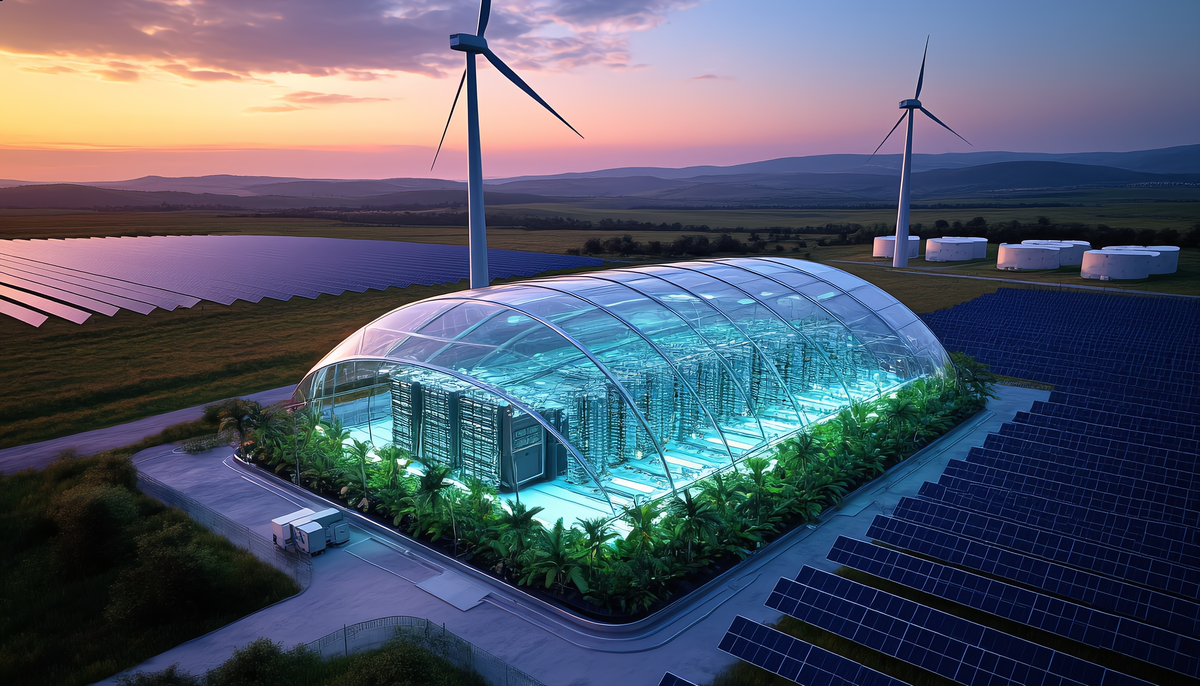Green Energy and Bitcoin Mining in 2025: Trends, Challenges, and the Road Ahead

Introduction
Bitcoin mining has long been at the center of environmental debates due to its high energy demands—estimated at 138 TWh annually in 2025, or approximately 0.5% of global electricity consumption. However, the industry is undergoing a significant transformation, shifting toward sustainable energy sources. This article examines the latest trends, benefits, challenges, and controversies surrounding the use of green energy in Bitcoin mining as of May 12, 2025.
1. Background and Market Context
Bitcoin mining, driven by the energy-intensive proof-of-work (PoW) consensus mechanism, has historically relied on fossil fuels—particularly coal. After China’s 2021 mining ban, operations migrated to countries such as the United States, Kazakhstan, and Canada. This shift, coupled with rising environmental awareness and regulatory pressures, has pushed miners toward greener alternatives.
The global market for Bitcoin mining is expected to reach USD 2.83 billion by 2032, growing at a CAGR of 7.8% from 2025. These figures underscore the substantial economic stakes tied to the industry’s energy decisions.
2. Green Energy Adoption: Trends and Statistics
A recent study by the Cambridge Centre for Alternative Finance (CCAF), published April 28, 2025, reveals that 52.4% of the energy used in Bitcoin mining now comes from sustainable sources, including:
- Nuclear Energy: 9.8%
- Renewable Energy: 42.6%
- Hydroelectric: 23.4%
- Wind: 15.4%
- Solar: 3.2%
This marks a significant increase from 37.6% in 2022. The same study notes a dramatic drop in coal usage—from 36.6% in 2022 to 8.9% in 2025—while natural gas usage rose from 25.0% to 38.2%, reflecting a partial shift to less carbon-intensive fuels.
3. Benefits of Green Energy Use
The integration of green energy into Bitcoin mining yields several key benefits:
- Utilization of Surplus Energy: Mining operations often absorb excess renewable energy (e.g., solar and wind), stabilizing power grids and reducing waste.
- Case Study: Bhutan: As of March 2025, Bhutan held 10,070 BTC (worth ~USD 1 billion), mined using hydroelectric power. Revenues have supported economic development, including doubling civil servant salaries.
- Alignment with Global Goals: The shift toward renewables aligns with the UN’s Sustainable Development Goals, notably SDG 7 (affordable and clean energy) and SDG 13 (climate action).
4. Ongoing Challenges
Despite progress, several obstacles remain:
- High Energy Use and Emissions: Bitcoin mining still consumes 138 TWh/year, emitting 39.8 million tons of CO₂—equivalent to Slovakia’s annual emissions.
- Water Usage: In 2021, water use for mining in Kazakhstan alone totaled 997.9 gigaliters—a 53.7% increase from the previous year. Projections indicate a national water shortfall of 75 gl by 2030.
- Limited Impact on Infrastructure Efficiency: Research shows that while environmental innovations (such as patents and energy transitions) have some effect, the Load Capacity Factor (LCF) impact remains modest.
5. Sustainability Initiatives and Innovations
The mining industry is responding with a range of forward-looking solutions:
- Green Mining Initiative: Backed by Energy Web, PayPal’s Blockchain Research Group, and DMG Blockchain, this initiative incentivizes low-carbon energy use. Miners earn rewards via a “green keys” system tied to cleaner on-chain operations.
- Efficiency Technologies: Techniques such as hydro direct liquid cooling (DLC) are being deployed to reduce heat waste and increase mining efficiency. DMG Blockchain targets 2.1 EH/s capacity using these methods.
- Policy and Regulation: Governments are promoting renewable energy incentives, carbon taxes, water-use regulations, and support for technologies like proof-of-stake. Leaders include the U.S., Canada, Norway, and Bhutan.
6. Controversies and Differing Perspectives
The environmental debate around Bitcoin mining remains polarized:
- Supporters argue that mining can accelerate the renewable energy transition by monetizing surplus energy and promoting decentralized grid solutions.
- Critics caution that mining may detract from investments in long-term energy infrastructure and undermine broader sustainability goals.
This ongoing debate reflects the complex intersection of technology, economics, and environmental responsibility.
Summary Table: Key Trends in Green Bitcoin Mining (2025)
| Aspect | Details | Source |
|---|---|---|
| % of Sustainable Energy | 52.4% (9.8% nuclear, 42.6% renewables: hydro 23.4%, wind 15.4%, solar 3.2%) | Cambridge study: Sustainable Energy Rising in Bitcoin Mining |
| Annual Energy Consumption | 138 TWh (0.5% of global electricity) | Scientific Reports (2025) |
| Annual CO₂ Emissions | 39.8 million tons (equal to Slovakia’s emissions) | Scientific Reports |
| Water Footprint | 997.9 gigaliters in Kazakhstan (2021), 53.7% increase from 2020 | Scientific Reports |
| Major Sustainability Initiatives | Green Mining Initiative, crypto-economic incentives, clean energy validation platforms | Energy Web: Bitcoin Green Mining and Sustainable Future |
Conclusion
The Bitcoin mining sector is making measurable progress toward environmental sustainability in 2025, with more than half its energy now derived from sustainable sources. While this evolution offers key advantages—such as improved grid stability and alignment with global climate goals—significant challenges persist, particularly in emissions and water use.
Innovative technologies, policy frameworks, and collaborative initiatives are paving the way for a greener mining future. However, as debates continue, sustained research and balanced regulation will be essential to ensuring that the industry’s growth aligns with long-term ecological and economic goals.
This article presented by Loka Mining.
Loka is revolutionizing the Bitcoin mining ecosystem by directly connecting investors with Bitcoin miners through a decentralized mining pool and an upcoming permissionless forward hashrate marketplace protocol.
Loka enables investors to get Bitcoin at lower than market price without centralized & counter-party risks, and Bitcoin miners to access capital efficient financing and hedge their risk exposure by selling their future mining rewards.
Find out more about loka in https://lokamining.com — or access our mining pool aggregator on https://pool.lokamining.com





